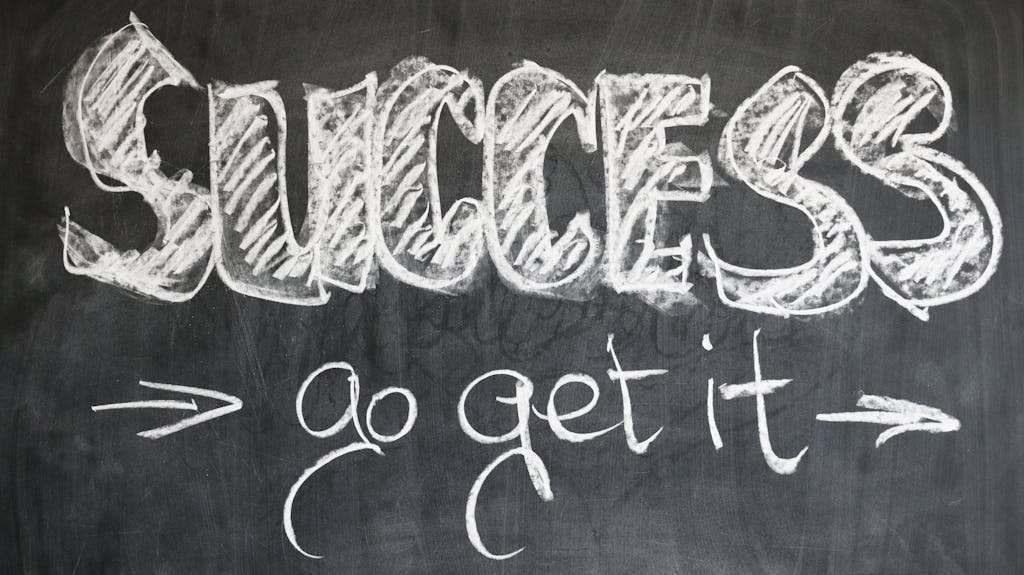Introduction
Are you ready to unlock your true leadership potential and achieve peak performance? Tony Robbins’ RPM (Rapid Planning Method) is here to help! As leaders, we strive for effectiveness, but often find ourselves bogged down by endless to-do lists. The RPM system revolutionizes the way you manage your life and goals, allowing you to focus on what truly matters. Did you know that leaders who use structured planning methods like RPM are 35% more productive? Let’s dive deep into how you can harness the power of RPM to elevate your leadership game!

Understanding the Tony Robbins RPM System
The RPM system, or Rapid Planning Method, is a powerful life management tool developed by Tony Robbins. It shifts from the traditional task-oriented approach to a results-focused strategy. RPM stands for Results, Purpose, and Massive Action Plan.
- Results: This focuses on what you truly want to achieve.
- Purpose: This is the reason behind your desire, your “why.”
- Massive Action Plan: This is your roadmap outlining the steps needed to achieve your results.
Unlike conventional to-do lists, where tasks may feel like a never-ending cycle of chores, the RPM method centers on clarity and intention. For instance, instead of listing “Complete project report,” under RPM, you may specify “Deliver a project report that provides clear insights and value to stakeholders, helping shape future strategies.”
Setting Meaningful Goals with RPM
Setting goals is foundational to RPM, but it’s not just about listing aspirations. It’s about crafting meaningful and achievable outcomes.

Identifying and Defining Your Ultimate Outcomes
Begin by pinpointing the ultimate outcomes you desire. Ask yourself what you want to achieve in both your personal and professional life. For example, if you’re aiming to improve team performance, your outcome might be “Cultivate a high-performance culture within my team by enhancing collaboration and accountability.”
Establishing the Drive: Understanding Your “Why”
Your purpose is your driving force. It’s what motivates you to pursue your goals. To reinforce your purpose, reflect deeply on why each goal is essential to you. For the example above, it could be, “Improve team performance to increase overall productivity and foster a more engaging workplace.”
Crafting Actionable and Inspiring Plans to Achieve Your Goals
Now, translate your outcomes and purpose into an actionable and inspiring massive action plan. Break down your goals into specific steps. Instead of broad actions, focus on precise tasks, such as “Implement weekly team meetings focused on performance metrics and collaborative strategies,” and “Develop a reward system to recognize and celebrate team achievements.”
“The path to success is to take massive, determined action.” – Tony Robbins
Applying RPM to Leadership Development
The RPM method is particularly beneficial for leadership development as it enhances decision-making and strategic thinking, pivotal traits for any leader.
Enhancing Decision-Making and Strategic Thinking
Leaders often face numerous decisions daily, ranging from operational to strategic. By using RPM, you focus on outcomes and purpose, allowing you to prioritize effectively. For example, if your goal is to increase company sales, your daily actions will be aligned with this objective, ensuring you make strategic decisions that contribute to this goal.
Boosting Team Productivity Through Clear Goal-Setting
When leaders communicate clear goals and the purpose behind them, teams are more engaged and productive. A real-life example includes a marketing manager who used RPM to define clear outcomes for their team, such as “Increase brand awareness by 20% over six months through targeted campaigns.” By breaking this down into weekly sprints and aligning everyone’s tasks towards this result, the team’s productivity and morale soared.
“Setting goals is the first step in turning the invisible into the visible.” – Tony Robbins
Real-Life Case Studies of Leaders Who Transformed with RPM
Consider the case of James, a mid-level manager who reported directly to me for about 2 years. When he started his first role on the team I led, he was struggling to balance numerous projects throughout his areas of responsibility. After learning and adapting the RPM methodology, he identified his key results, clarified his purposes, and mapped out detailed action plans. Within months, his efficiency improved, leading to at least 15% increases in key performance indicators such as sales growth, product availability metrics, and customer satisfaction scores. These consistent results earn him a much deserved promotion.
Peak Performance through RPM Insights
RPM not only aids in professional efficiency but also in personal growth and resilience.
Utilizing RPM for Personal Growth and Resilience
Leaders face stress, and maintaining resilience is critical. By setting clear, purpose-driven goals, RPM helps in reducing overwhelm and boosting personal growth. For example, a leader might set a goal of “Creating a balanced lifestyle by dedicating time to fitness and family,” with actions like “schedule three workout sessions per week” and “plan two family activities monthly.”
Techniques to Maintain Focus and Avoid Burnout
Using RPM, leaders can avoid burnout by maintaining focus on their most critical goals. Initiatives like “Spend the first 30 minutes of each day planning and prioritizing with RPM” help maintain a strong focus. Additionally, regularly reviewing and adjusting plans ensures they remain aligned with the desired outcomes, further preventing burnout.
Measuring Success: How to Track Progress and Stay Motivated
A crucial component of RPM is tracking progress. Use tools like journals or digital planners to monitor accomplishments. Celebrate milestones, and reflect on setbacks to understand and adjust your strategies. This continuous review and celebration keep motivation high, driving sustained peak performance.
RPM System Integration with Daily Routines
To fully benefit from RPM, integrating it into daily routines is essential. Integrating Tony Robbins’ RPM (Result, Purpose, Massive Action Plan) system into your daily routines can transform your productivity and focus. Here’s a step-by-step guide with detailed insights and examples:
1. Define Clear Results
Explanation: Start each day by identifying the key results you want to achieve. These results should be specific, measurable, and time-bound.
Example: Imagine you run a small business and want to increase customer satisfaction. Your result for the day could be: “Resolve 10 customer service tickets with a satisfaction rating of 90% or higher.”
2. Connect with Your Purpose
Explanation: Understanding why these results are important to you provides motivation and clarity. This purpose should resonate deeply with your personal or professional values.
Example: Using the previous scenario, your purpose could be: “By resolving customer service issues promptly and effectively, I strengthen customer loyalty, which in turn drives repeat business and referrals. This aligns with my value of providing exceptional service.”
3. Create a Massive Action Plan (MAP)
Explanation: Develop a detailed action plan that outlines the steps needed to achieve your results. This plan should be comprehensive and broken down into manageable tasks.
Example:
- Gather necessary information: Review the details of each customer service ticket.
- Prioritize tickets: Sort the tickets based on urgency and impact on customer satisfaction.
- Communicate effectively: Develop responses or solutions for each ticket, ensuring clarity and empathy.
- Follow-up: After resolving the issues, follow-up with customers to confirm their satisfaction and gather feedback.
4. Schedule Your Day
Explanation: Integrate the RPM system into your daily schedule by allocating specific time blocks for each part of your Massive Action Plan. Stick to these time blocks rigorously to maintain focus.
Example:
- 8:00 AM – 9:00 AM: Review and prioritize customer service tickets.
- 9:00 AM – 11:00 AM: Address high-priority tickets.
- 11:00 AM – 12:00 PM: Take a short break and follow-up with customers from the previous day.
- 1:00 PM – 3:00 PM: Continue working on remaining tickets.
- 3:00 PM – 4:00 PM: Review feedback and make necessary adjustments to the approach.
5. Reflect and Adjust
Explanation: At the end of the day, take time to reflect on what worked and what didn’t. Adjust your approach accordingly for the next day to continuously improve your process.
Example:
- Evening Reflection: Assess the success of your actions based on customer feedback and satisfaction ratings. Note any challenges faced and brainstorm solutions to improve efficiency for the next day.
6. Incorporate Flexibility
Explanation: While it’s important to follow the RPM system, allow some flexibility for unexpected tasks or emergencies. This prevents rigidity and maintains a dynamic workflow.
Example: If an urgent issue arises that demands immediate attention, adjust your schedule and reallocate time to ensure that high-priority results are still achievable within the day.
Benefits of RPM Integration:
- Enhanced Focus: By clarifying your key results and purpose, you stay focused on what truly matters.
- Increased Productivity: A detailed Massive Action Plan ensures you take consistent and effective actions towards your goals.
- Better Time Management: Scheduling your tasks helps in managing your time efficiently, reducing procrastination and distractions.
- Continuous Improvement: Regular reflection and adjustments keep you improving and refining your approach.
“Change your thinking, change your life.” – Brian Tracy
Creating a Daily RPM Planner
Develop a daily planner using the RPM framework. Start each day by defining your results, purposes, and action plans for the day. This structured start sets a positive and productive tone.
Balancing Work, Life, and Self-Care with RPM
The holistic approach of RPM ensures a balance between work, life, and self-care. For instance, set goals not only for professional outcomes but also for personal wellness, such as “Amplify personal well-being by meditating every morning.”

Tools and Resources to Complement Your RPM Journey
Several tools can complement your RPM journey, such as digital planning apps like Evernote or Trello, specifically tailored RPM planners, and online courses on productivity and time management.
Conclusion
Integrating Tony Robbins’ RPM system into your life can be a game-changer, especially for leaders aspiring to peak performance. By focusing on results, maintaining a clear purpose, and formulating a massive action plan, you can elevate your leadership skills and achieve unparalleled success. Are you ready to revolutionize your leadership approach with RPM? Dive in and start transforming your mindset today!






One Comment
Comments are closed.